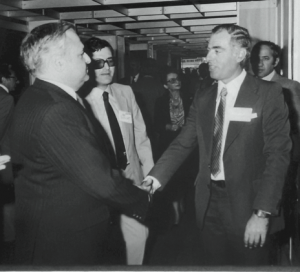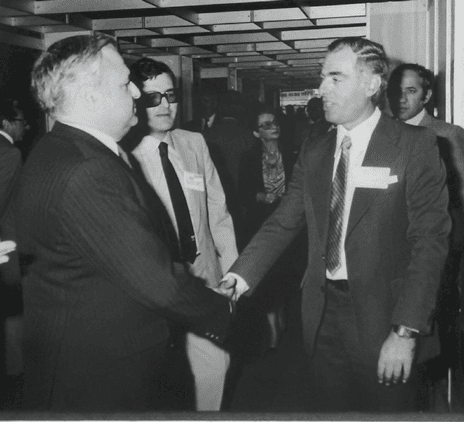
On May 23, 1967 Gamal Abdel Nasser closed the Straits of Tiran – the entrance to the Red Sea, ordered the UN force to leave Sinai, and moved six divisions (130,000 soldiers) into Sinai. This was against the agreement with the U.S. and United Nations after the 1957 war.
Israel then mobilized its reserve IDF forces and prepared for war.
On May 26, U.S. President Johnson warned Israel against unilateral war.
Eventually, Prime Minister Levi Eshkol said, “That’s it.” He elevated Gen. Moshe Dayan to Minister of Defense. Gen. Yitzkah Rabin was chief of staff, head of the IDF. Israel was ready.
Prior to my studies in the Technion (Israel Institute of Technology) I was working at RAFAEL Advanced Defense Systems, the government center for military development. After my graduation in 1966, I was assigned for reserve service at RAFAEL.
A few days before June 6, I kept calling my reserve unit and asked, “What’s happening, when are we going to be called?”
Eventually, on the 4th of June, I drove my old car from Tel Aviv to RAFAEL, a 2½ hour drive. As soon as I got to the gate, the engine died.
The war started on June 6, 1967. The IDF destroyed and wiped out the Egyptian Air Force in a surprise attack with results never seen before. On the Syrian front, escalation started the same day.
We spent most of the war developing special munitions to help penetrate the bunkers in the Golan Heights. These munitions were assembled, tested, and used soon after.
On June 9, the IDF advanced the 8th brigade to the north of the Golan Heights—the means what we developed were used by IAF (Israel Air Force) and the artillery in the fight at the Golan. IDF captured all the Golan including Kuneitra (40km from Damascus).
On June 10, at 18:00 hrs, Gen. Dayan agreed to a cease-fire. That’s my story for this war.
– Avraham Ashkenazi

